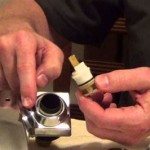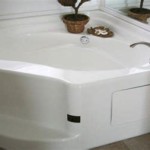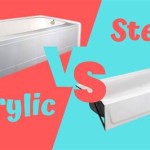Removing Old Bathtub Caulk: A Comprehensive Guide
Caulk plays a crucial role in maintaining a watertight seal around your bathtub, but over time, it can become discoloured, cracked, and unsightly. Removing old caulk is essential for a successful re-caulking job, ensuring a long-lasting seal that protects your bathroom from water damage.
Step 1: Gather Your Tools
Before you begin, gather the necessary tools: a sharp utility knife, a caulk removal tool, a damp cloth, isopropyl alcohol, rubbing alcohol, or a commercial caulk remover, and a vacuum cleaner.
Step 2: Safety First
Wear gloves and eye protection when working with caulk removers. Open windows or turn on a fan to ventilate the area, as some removers can emit strong fumes.
Step 3: Remove Loose Caulk
Use the utility knife to carefully cut through the old caulk where it meets the bathtub and the tile or wall. Try not to damage the surfaces. Once the cuts are made, use the caulk removal tool to pry up the caulk and remove it. Remove as much as possible by hand.
Step 4: Apply Caulk Remover
Apply your chosen caulk remover to the remaining caulk. Allow it to sit for the amount of time specified by the manufacturer's instructions. This will soften the caulk and make it easier to remove.
Step 5: Scrape Off Softened Caulk
Use the caulk removal tool or a plastic scraper to carefully scrape away the softened caulk. Be gentle to avoid damaging the surrounding surfaces. Wipe away any residue with the damp cloth.
Step 6: Clean the Area
Once most of the caulk is removed, clean the area thoroughly with isopropyl alcohol or rubbing alcohol to remove any remaining caulk residue and prepare the surfaces for re-caulking.
Step 7: Vacuum
Use the vacuum cleaner to remove any dust or debris from the area before re-caulking.
Additional Tips:
- For silicone caulk, use a specific silicone caulk remover.
- If the old caulk is particularly stubborn, you may need to repeat the caulk remover application and scraping process.
- Test the caulk remover on an inconspicuous area first to ensure it does not damage the surrounding surfaces.
- Allow ample time for the caulk remover to work. Rushing the process can make removal more difficult.
- Once the old caulk is removed, allow the surfaces to dry completely before applying new caulk.

How To Remove Old Caulk Dap Global

Caulk Remover How To Remove Old Diy Bathroom

Prevent Water Damage Replace The Old Caulk Around Your Tub

Removing Hardened Caulk Fine Homebuilding

The Best Tricks How To Remove Caulk

How To Remove And Replace Old Tub Caulk

The Best Way To Remove Old Caulk In Bathroom Kitchens

Here S How Remove And Replace Mildewed Bathroom Caulk

How To Remove Old Caulk From Your Tub And Tile Heatherstudios

Can I Recaulk Over Existing Caulk The Grout Medic








